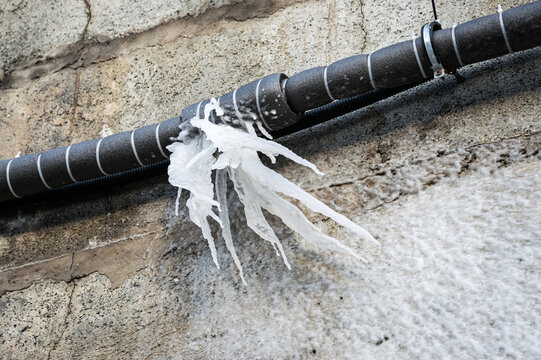Crucial Advice to Protect Against Frozen Plumbing in Cold Weather
Crucial Advice to Protect Against Frozen Plumbing in Cold Weather
Blog Article
Were you trying to find help and advice about Helpful Tips to Prevent Frozen Pipes this Winter?

Winter can damage your plumbing, especially by freezing pipes. Here's just how to prevent it from taking place and what to do if it does.
Intro
As temperatures decline, the risk of icy pipelines rises, possibly leading to costly fixings and water damages. Recognizing just how to avoid frozen pipes is important for home owners in chilly environments.
Comprehending Frozen Pipelines
What creates pipes to ice up?
Pipes ice up when subjected to temperatures listed below 32 ° F (0 ° C) for prolonged durations. As water inside the pipes ices up, it broadens, putting pressure on the pipeline wall surfaces and possibly causing them to burst.
Dangers and problems
Icy pipes can result in water disturbances, building damage, and costly repair services. Burst pipelines can flood homes and cause extensive structural damage.
Signs of Frozen Pipeline
Identifying frozen pipelines early can prevent them from bursting.
How to determine frozen pipes
Seek lowered water circulation from taps, uncommon odors or sounds from pipes, and noticeable frost on subjected pipes.
Prevention Tips
Shielding prone pipelines
Wrap pipes in insulation sleeves or use heat tape to secure them from freezing temperatures. Concentrate on pipes in unheated or outside areas of the home.
Heating strategies
Keep interior areas adequately heated up, particularly locations with pipes. Open up cabinet doors to allow cozy air to circulate around pipes under sinks.
Securing Outside Pipes
Garden hose pipes and outdoor taps
Detach and drain pipes garden tubes prior to winter. Install frost-proof faucets or cover exterior taps with shielded caps.
What to Do If Your Pipelines Freeze
Immediate actions to take
If you presume frozen pipelines, keep faucets open to ease stress as the ice thaws. Use a hairdryer or towels taken in hot water to thaw pipelines slowly.
Long-Term Solutions
Architectural modifications
Consider rerouting pipelines far from exterior wall surfaces or unheated areas. Include extra insulation to attic rooms, cellars, and crawl spaces.
Updating insulation
Invest in high-grade insulation for pipes, attic rooms, and walls. Proper insulation assists maintain regular temperature levels and reduces the danger of icy pipelines.
Conclusion
Protecting against icy pipes needs positive actions and fast responses. By comprehending the causes, signs, and safety nets, house owners can protect their plumbing during winter.
5 Ways to Prevent Frozen Pipes
Drain Outdoor Faucets and Disconnect Hoses
First, close the shut-off valve that controls the flow of water in the pipe to your outdoor faucet. Then, head outside to disconnect and drain your hose and open the outdoor faucet to allow the water to completely drain out of the line. Turn off the faucet when done. Finally, head back to the shut-off valve and drain the remaining water inside the pipe into a bucket or container. Additionally, if you have a home irrigation system, you should consider hiring an expert to clear the system of water each year.
Insulate Pipes
One of the best and most cost-effective methods for preventing frozen water pipes is to wrap your pipes with insulation. This is especially important for areas in your home that aren’t exposed to heat, such as an attic. We suggest using foam sleeves, which can typically be found at your local hardware store.
Keep Heat Running at 65
Your pipes are located inside your walls, and the temperature there is much colder than the rest of the house. To prevent your pipes from freezing, The Insurance Information Institute suggests that you keep your home heated to at least 65 degrees, even when traveling. You may want to invest in smart devices that can keep an eye on the temperature in your home while you’re away.
Leave Water Dripping
Moving water — even a small trickle — can prevent ice from forming inside your pipes. When freezing temps are imminent, start a drip of water from all faucets that serve exposed pipes. Leaving a few faucets running will also help relieve pressure inside the pipes and help prevent a rupture if the water inside freezes.
Open Cupboard Doors
Warm your kitchen and bathroom pipes by opening cupboards and vanities. You should also leave your interior doors ajar to help warm air circulate evenly throughout your home.
:strip_icc()/snow-outdoor-faucet-pipes-4af65d1e5e904fb1aa7bf74071fe5d89.jpg)
We were guided to that article on Winter Plumbing Precautions: Preventing Frozen Pipes from someone on another site. Do you know somebody who is occupied with the niche? Do not hesitate to share it. Thanks for going through it.
Call Today Report this page